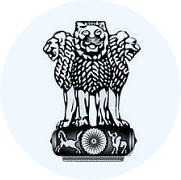UPSC Exam > UPSC Questions > A Parliamentary System of Government is one ...
Start Learning for Free
A Parliamentary System of Government is one in which
- a)all political parties in the Parliament are represented in the Government
- b)the Government is responsible to the Parliament and can be removed by it
- c)the Government is elected by the people and can be removed by them
- d)the Government is chosen by the Parliament but cannot be removed before completion of a fixed term
Correct answer is option 'B'. Can you explain this answer?
| FREE This question is part of | Download PDF Attempt this Test |
Most Upvoted Answer
A Parliamentary System of Government is one in whicha)all political p...
The Parliamentary System of Government
The parliamentary system of government is a democratic form of government in which the executive branch is accountable to the legislature. It is characterized by a fusion of powers between the executive and legislative branches, where the government is responsible to and can be removed by the parliament.
Explanation of Option B
The Government is responsible to the Parliament
In a parliamentary system, the government is accountable to the parliament. This means that the executive branch, headed by the Prime Minister or the Chief Executive, is answerable to the legislature. The government presents its policies, programs, and legislative agenda to the parliament for approval. The ministers are required to regularly attend the parliament and answer questions posed by the members of parliament. They are also accountable for their actions and decisions.
The Government can be removed by the Parliament
One of the key features of a parliamentary system is that the government can be removed by the parliament through a vote of no confidence. If the members of parliament lose confidence in the government, they can pass a motion of no confidence, which can lead to the downfall of the government. This ensures that the government remains accountable to the representatives of the people and prevents it from becoming too powerful or authoritarian.
Comparison with other Options
Option A: In a parliamentary system, not all political parties in the parliament are represented in the government. The government is usually formed by the political party or coalition with the majority of seats in the parliament.
Option C: While the government in a parliamentary system is elected by the people, it is ultimately accountable to the parliament and can be removed by it. The people indirectly have the power to remove the government by voting for a different party in the next general elections.
Option D: The government in a parliamentary system is chosen by the parliament, but it can be removed before completion of a fixed term through a vote of no confidence. This ensures that the government remains accountable and can be held responsible for its actions.
Therefore, the correct answer is option B, as it accurately describes the key features of a parliamentary system of government.
The parliamentary system of government is a democratic form of government in which the executive branch is accountable to the legislature. It is characterized by a fusion of powers between the executive and legislative branches, where the government is responsible to and can be removed by the parliament.
Explanation of Option B
The Government is responsible to the Parliament
In a parliamentary system, the government is accountable to the parliament. This means that the executive branch, headed by the Prime Minister or the Chief Executive, is answerable to the legislature. The government presents its policies, programs, and legislative agenda to the parliament for approval. The ministers are required to regularly attend the parliament and answer questions posed by the members of parliament. They are also accountable for their actions and decisions.
The Government can be removed by the Parliament
One of the key features of a parliamentary system is that the government can be removed by the parliament through a vote of no confidence. If the members of parliament lose confidence in the government, they can pass a motion of no confidence, which can lead to the downfall of the government. This ensures that the government remains accountable to the representatives of the people and prevents it from becoming too powerful or authoritarian.
Comparison with other Options
Option A: In a parliamentary system, not all political parties in the parliament are represented in the government. The government is usually formed by the political party or coalition with the majority of seats in the parliament.
Option C: While the government in a parliamentary system is elected by the people, it is ultimately accountable to the parliament and can be removed by it. The people indirectly have the power to remove the government by voting for a different party in the next general elections.
Option D: The government in a parliamentary system is chosen by the parliament, but it can be removed before completion of a fixed term through a vote of no confidence. This ensures that the government remains accountable and can be held responsible for its actions.
Therefore, the correct answer is option B, as it accurately describes the key features of a parliamentary system of government.
Free Test
FREE
| Start Free Test |
Community Answer
A Parliamentary System of Government is one in whicha)all political p...
The correct answer is Option 2.
Key-Points
- Parliamentary system, a democratic form of government in which the party (or a coalition of parties) with the greatest representation in the parliament (legislature) forms the government, its leader becoming prime minister or chancellor.
- Executive functions are exercised by members of the parliament appointed by the prime minister to the cabinet.
- The parties in the minority serve in opposition to the majority and have the duty to challenge it regularly.
- Prime ministers may be removed from power whenever they lose the confidence of a majority of the ruling party or the parliament.
- The parliamentary system originated in Britain and was adopted in several of its former colonies.
Additional Information
- In the Indian democratic setup, the Government is responsible to the Parliament and can be removed by it.
- Specifically, it is the Lok Sabha for which the council of ministers is collectively responsible.
- This form of government where the center is responsible to the elected representatives of the Parliament is called the "Parliamentary form of government.” Hence, Option 2 is the correct answer.
Attention UPSC Students!
To make sure you are not studying endlessly, EduRev has designed UPSC study material, with Structured Courses, Videos, & Test Series. Plus get personalized analysis, doubt solving and improvement plans to achieve a great score in UPSC.

|
Explore Courses for UPSC exam
|

|
Similar UPSC Doubts
A Parliamentary System of Government is one in whicha)all political parties in the Parliament are represented in the Governmentb)the Government is responsible to the Parliament and can be removed by itc)the Government is elected by the people and can be removed by themd)the Government is chosen by the Parliament but cannot be removed before completion of a fixed termCorrect answer is option 'B'. Can you explain this answer?
Question Description
A Parliamentary System of Government is one in whicha)all political parties in the Parliament are represented in the Governmentb)the Government is responsible to the Parliament and can be removed by itc)the Government is elected by the people and can be removed by themd)the Government is chosen by the Parliament but cannot be removed before completion of a fixed termCorrect answer is option 'B'. Can you explain this answer? for UPSC 2024 is part of UPSC preparation. The Question and answers have been prepared according to the UPSC exam syllabus. Information about A Parliamentary System of Government is one in whicha)all political parties in the Parliament are represented in the Governmentb)the Government is responsible to the Parliament and can be removed by itc)the Government is elected by the people and can be removed by themd)the Government is chosen by the Parliament but cannot be removed before completion of a fixed termCorrect answer is option 'B'. Can you explain this answer? covers all topics & solutions for UPSC 2024 Exam. Find important definitions, questions, meanings, examples, exercises and tests below for A Parliamentary System of Government is one in whicha)all political parties in the Parliament are represented in the Governmentb)the Government is responsible to the Parliament and can be removed by itc)the Government is elected by the people and can be removed by themd)the Government is chosen by the Parliament but cannot be removed before completion of a fixed termCorrect answer is option 'B'. Can you explain this answer?.
A Parliamentary System of Government is one in whicha)all political parties in the Parliament are represented in the Governmentb)the Government is responsible to the Parliament and can be removed by itc)the Government is elected by the people and can be removed by themd)the Government is chosen by the Parliament but cannot be removed before completion of a fixed termCorrect answer is option 'B'. Can you explain this answer? for UPSC 2024 is part of UPSC preparation. The Question and answers have been prepared according to the UPSC exam syllabus. Information about A Parliamentary System of Government is one in whicha)all political parties in the Parliament are represented in the Governmentb)the Government is responsible to the Parliament and can be removed by itc)the Government is elected by the people and can be removed by themd)the Government is chosen by the Parliament but cannot be removed before completion of a fixed termCorrect answer is option 'B'. Can you explain this answer? covers all topics & solutions for UPSC 2024 Exam. Find important definitions, questions, meanings, examples, exercises and tests below for A Parliamentary System of Government is one in whicha)all political parties in the Parliament are represented in the Governmentb)the Government is responsible to the Parliament and can be removed by itc)the Government is elected by the people and can be removed by themd)the Government is chosen by the Parliament but cannot be removed before completion of a fixed termCorrect answer is option 'B'. Can you explain this answer?.
Solutions for A Parliamentary System of Government is one in whicha)all political parties in the Parliament are represented in the Governmentb)the Government is responsible to the Parliament and can be removed by itc)the Government is elected by the people and can be removed by themd)the Government is chosen by the Parliament but cannot be removed before completion of a fixed termCorrect answer is option 'B'. Can you explain this answer? in English & in Hindi are available as part of our courses for UPSC.
Download more important topics, notes, lectures and mock test series for UPSC Exam by signing up for free.
Here you can find the meaning of A Parliamentary System of Government is one in whicha)all political parties in the Parliament are represented in the Governmentb)the Government is responsible to the Parliament and can be removed by itc)the Government is elected by the people and can be removed by themd)the Government is chosen by the Parliament but cannot be removed before completion of a fixed termCorrect answer is option 'B'. Can you explain this answer? defined & explained in the simplest way possible. Besides giving the explanation of
A Parliamentary System of Government is one in whicha)all political parties in the Parliament are represented in the Governmentb)the Government is responsible to the Parliament and can be removed by itc)the Government is elected by the people and can be removed by themd)the Government is chosen by the Parliament but cannot be removed before completion of a fixed termCorrect answer is option 'B'. Can you explain this answer?, a detailed solution for A Parliamentary System of Government is one in whicha)all political parties in the Parliament are represented in the Governmentb)the Government is responsible to the Parliament and can be removed by itc)the Government is elected by the people and can be removed by themd)the Government is chosen by the Parliament but cannot be removed before completion of a fixed termCorrect answer is option 'B'. Can you explain this answer? has been provided alongside types of A Parliamentary System of Government is one in whicha)all political parties in the Parliament are represented in the Governmentb)the Government is responsible to the Parliament and can be removed by itc)the Government is elected by the people and can be removed by themd)the Government is chosen by the Parliament but cannot be removed before completion of a fixed termCorrect answer is option 'B'. Can you explain this answer? theory, EduRev gives you an
ample number of questions to practice A Parliamentary System of Government is one in whicha)all political parties in the Parliament are represented in the Governmentb)the Government is responsible to the Parliament and can be removed by itc)the Government is elected by the people and can be removed by themd)the Government is chosen by the Parliament but cannot be removed before completion of a fixed termCorrect answer is option 'B'. Can you explain this answer? tests, examples and also practice UPSC tests.

|
Explore Courses for UPSC exam
|

|
Suggested Free Tests
Signup for Free!
Signup to see your scores go up within 7 days! Learn & Practice with 1000+ FREE Notes, Videos & Tests.
























